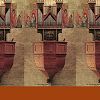Tracks featured on
Most played tracks
Thanks!
Your suggestion has been successfully submitted.
forwards and backwards through bits of a [mostly] electronic music timeline. reverence for BCR. records i’ve played forever and new records i’ve just found. boil it down. one z in drizle.
Formed initially in 1962 by Winston Riley and a group of youth club friends, The Techniques were first recorded by club owner and future prime minister Edward Seaga. As ska slowed to rocksteady and morphed to reggae, and Jamaican music booned in popularity across the world towards the 1970s, Riley remained the one permanent member of The Techniques, honing his production craft and creating hits that would break the US and UK charts. He created music tirelessly, well into the 21st Century until his passing in 2012. Enjoy an hour of some of Jamaica's best music from a reggae polymath on this In Focus.
Sign up or log in to MY NTS and get personalised recommendations
Support NTS for timestamps across live channels and the archive
William Corkine (fl. 1610-1617) was an English composer, lutenist, gambist, and lyra viol player of the Renaissance.
Corkine was in private service in the second decade of the seventeenth century, before travelling to Poland in 1617. He published a first book of Ayres to Sing and Play to the Lute and Basse-Viollin in 1610, and in 1612 a Second Booke of Ayres, some to sing and play to the Basse-Violl alone: others to be sung to the Lute and Bass Viollin. The first book has the more charming songs. The second is notable in that thirteen of the songs are without tablature accompaniment or alternative partsong versions, but are instead marked to be sung "to the Base-Violl alone".
William Corkine (fl. 1610-1617) was an English composer, lutenist, gambist, and lyra viol player of the Renaissance.
Corkine was in private service in the second decade of the seventeenth century, before travelling to Poland in 1617. He published a first book of Ayres to Sing and Play to the Lute and Basse-Viollin in 1610, and in 1612 a Second Booke of Ayres, some to sing and play to the Basse-Violl alone: others to be sung to the Lute and Bass Viollin. The first book has the more charming songs. The second is notable in that thirteen of the songs are without tablature accompaniment or alternative partsong versions, but are instead marked to be sung "to the Base-Violl alone".
Thanks!
Your suggestion has been successfully submitted.
Thanks!
Your suggestion has been successfully submitted.
